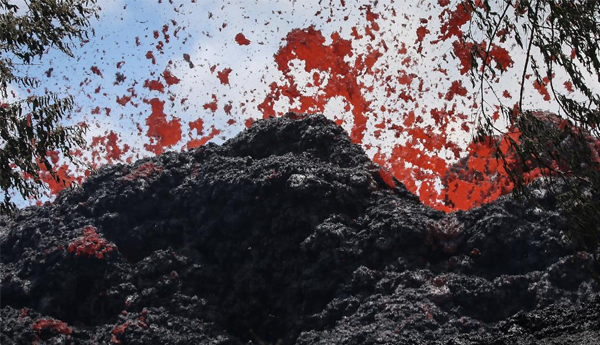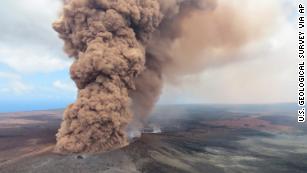
17th Fissure Emitting Steam and Lava Leads To More Evacuations on Hawaii’s Big Island
A new fissure opened early Sunday on Hawaii’s Big Island, splattering lava tens of feet into the air and forcing more residents to evacuate.
The fissure, which is several hundred yards long, was the 17th crack in the ground to open on the island in the week since the Kilauea volcano erupted on May 3. The newest fissure was originally designated the 18th fissure, but because the one previously labeled 17th never spewed lava, the Hawaiian Volcano Observatory reclassified the latest fissure as the 17th.
Nearly 2,000 people have been evacuated since the volcano erupted May 3, sending lava flowing into communities and threatening a nearby geothermal plant.
The Department of Public Works and Police said the new fissure opened on Hale Kamahina Loop Road and is emitting steam and lava.
Residents along the road have been ordered to evacuate, officials said. So far, 37 structures have been destroyed.
The volcanic vents, or fissures, have released slow-moving lava and toxic gas into island communities, gobbling up dozens of homes and vehicles. The Hawaii Civil Defense Agency said in a Sunday message that vacation rentals in Lower Puna were directed to cease operations to relieve the demand for water as well as reduce the area population so emergency responders can focus on residents.
The Hawaii Police Department also enforced the Federal Aviation Administration’s temporary flight restriction for Lower Puna. No helicopter or drone activity is allowed without approval.
Another fissure, the 16th, was reported earlier Saturday and “produced a lava flow that traveled about 250 yards before stalling,” officials said.
Trump declares a major disaster in Hawaii after volcanic eruptions and lava


